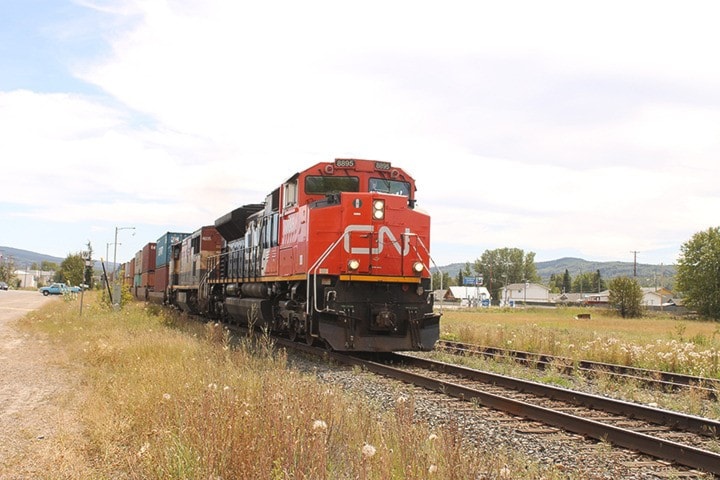With the ongoing expansion of the Port of Prince Rupert, the number of Canadian National Railway Company (CN) freight trains passing through Burns Lake is expected to rise.
According to CN police constable Jamie Thorne, Burns Lake currently sees 24 trains per day, or one train per hour.
Thorne recently made a presentation to Burns Lake council. He said that with the growing number of trains passing through northern communities such as Burns Lake, trespassing is one of CN’s main concerns.
Last year there were two fatalities involving trains in the Burns Lake area. A 19-year-old man was hit by a freight train in July in Decker Lake, and a 44-year-old woman was hit by a Via Rail train in October in Burns Lake.
Thorne said CN has been striving to reduce accidents on the railway through education, enforcement and engineering.
“With engineering, wherever possible CN tries to separate vehicles from train traffic,” he explained.
CN and its partners have been able to significantly reduce fatalities over the years. While there were 365 fatalities involving trains in 1980 across Canada, there were 80 fatalities in 2015.
“It’s still too much, but you can see that these programs are working,” said Thorne.
Earlier this year, the Burns Lake detachment of the RCMP announced a partnership with CN to prevent fatalities involving trains in the Burns Lake area. This partnership will involve education programs in local schools and First Nations reserves, as well as more pro-active patrols by police in critical areas and signage along the tracks.
Trains blocking grade crossings a concern
The Regional District of Bulkley-Nechako’s (RDBN) board of directors is expressing concerns about grade crossings in the region being blocked by Canadian National Railway (CN) trains for long periods of time.
In a recent meeting, the rural directors committee recommended that the RDBN board write a letter to Transport Canada, the regulatory body that enforces grade crossings regulations, asking for solutions.
The decision to reach out to Transport Canada follows a letter received by the RDBN from the Fort Fraser Livestock Association. The letter says grade crossings in their operating area have been repeatedly blocked by rail cars for “unreasonable lengths of time.”
According to grade crossings regulations, it is prohibited for railway equipment to be left standing on a crossing surface, or for switching operations to be conducted in a manner that obstructs a public grade crossing, for more than five minutes when vehicular or pedestrian traffic is waiting to cross it.
Alex Kulchar, president of the Fort Fraser Livestock Association, says this regulation has been repeatedly violated.
In fact, Kulchar says a vehicle was unable to cross a grade crossing at Landaluza Road near Vanderhoof on Dec. 7, 2016 for approximately three hours - from 6 a.m. until 9:05 a.m.
“This crossing is essential to residents in the area and the length of time that it has been left impassible creates safety concerns and delays transportation of goods and personnel which has negative financial impacts for our members,” said Kulchar.
“We request that the grade crossing be kept open especially when traffic is waiting to cross it and that the safety issues created by the lengthy blocking of it be addressed by CN and the appropriate road authority,” added his letter.
Kate Fenske, a CN spokesperson, said CN makes every effort to avoid blocking crossings for extended periods and works to move trains through any road crossing or community “as quickly and safely as possible.”
